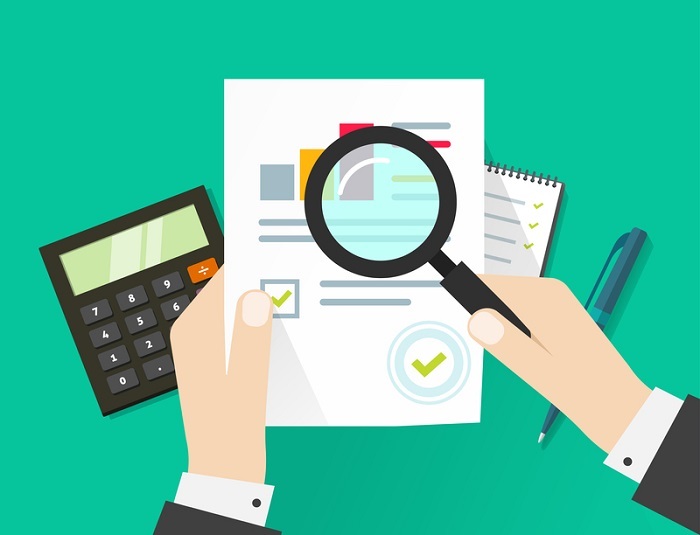
 Data Structure
Data Structure Networking
Networking RDBMS
RDBMS Operating System
Operating System Java
Java MS Excel
MS Excel iOS
iOS HTML
HTML CSS
CSS Android
Android Python
Python C Programming
C Programming C++
C++ C#
C# MongoDB
MongoDB MySQL
MySQL Javascript
Javascript PHP
PHP
- Selected Reading
- UPSC IAS Exams Notes
- Developer's Best Practices
- Questions and Answers
- Effective Resume Writing
- HR Interview Questions
- Computer Glossary
- Who is Who
How to Conduct a Successful Quality Audit?
Quality audits are essential for firms to avoid operations discrepancies and continue to expand gradually. Audits are always vital and must be carried out regularly, even if many have earned certifications like ISO 9001 to ensure the construction of the most effective Quality Management System (QMS).
To successfully conduct a quality audit and find opportunities for improvement in the organization's goods or services, effective preparation, execution, and follow-up are necessary. The stages necessary to carry out a successful quality audit will be covered in this blog, including planning, carrying it out, reporting the findings, and follow-up.

What is a Quality Audit?
A quality audit is a verification operation used to assess how closely a product, design, process, or system complies with a standard specification or method. The quality audit has two parts: the first, known as the quality system audit, analyze the framework in which the goods or services are created. The other is a product or service quality audit examining the products.
Importance of Quality Audits
The following are a few of the major benefits of performing quality audits ?
Finding areas for improvement ? Quality audits assist companies in finding areas where their quality management system, procedures, and practices need to be improved. This data is essential for figuring out how to raise the calibre of goods or services.
Ensuring compliance ? Quality audits assist companies in making sure they adhere to internal rules and processes as well as industry standards and legal obligations. Compliance is essential for avoiding fines, other consequences, and the company's reputation.
Increasing customer happiness ? Quality audits may increase customer satisfaction by identifying and correcting areas where the company's goods or services fall short of client expectations. It may also result in more repeat business and client loyalty.
Improving efficiency ? Quality audits may aid in locating process inefficiencies inside the company, resulting in cost savings and a rise in efficiency.
Creating a foundation for ongoing improvement ? Quality audits give organizations a framework for ongoing development by assisting them in identifying areas for development and creating action plans to improve the quality of their goods and services.
Types of Quality Audits
Internal Audits ? Internal audits are carried out by either the organization's staff members or a third-party auditor that the business has engaged. Internal audits are conducted to evaluate the efficiency of the company's quality management system and pinpoint development opportunities.
External Audits ? An impartial third-party auditor, such as a certification authority, conducts external audits. External audits examine how well a business complies with legal obligations and industry norms.
Process Audits ? Process audits concentrate on certain organizational processes to evaluate their efficacy, pinpoint areas for enhancement, and ensure they adhere to the organization's rules and procedures.
Product audits ? Product audits concern the company's goods or services caliber. They evaluate whether the goods or services conform to legal requirements, industry standards, and client needs.
Supplier Audits ? Supplier audits evaluate the suppliers' quality management systems. Supplier audits aim to ensure that the organization's suppliers adhere to legal requirements, industry standards, and quality standards.
Tips to Conduct a Quality Audit
1. Identify Your Auditor
Always be certain to understand your audience before holding an audit. Customers, government authorities, notified entities, or your personnel can all conduct audits. Understanding each of these personalities can help you better prepare for each situation.
For instance, a client inspecting you as part of your Quality Agreement can send one of their employees or a contract auditor from a different company. To demonstrate their value to customers, contract auditors are more prone to search for as many nonconformities as possible. But, customer service representatives will be particularly curious about the procedures and goods and could ask more technical questions.
2. Organize an opening meeting
The opening meeting is the first chance for the audit team to meet the auditee, introduce themselves, and review the audit process and timeline. The audit team should also summarise the audit criteria, goals, and particular areas of attention. The auditee may also use this time to ask questions and offer any background information that may be required.
3. Assemble data
The next stage is to collect data according to the audit criteria. For example, evaluating policies, procedures, and work instructions may be necessary. Process observation and staff interviews may also be necessary. To confirm that the auditee complies, the audit team should also analyze any relevant external requirements, such as laws or business standards.
4. Analyze the data
The audit team should analyze the data after it has been acquired to decide if the auditee's procedures and practices meet the audit criteria. This entails evaluating the auditee's procedures in light of the audit criteria's requirements and finding any areas of non-conformance or potential for improvement.
5. Record the findings
The audit team should clearly and succinctly capture the results of their work in an audit report or checklist. A description of the audit criteria, the audit's scope, its methodology, its conclusions, and any suggestions for improvement should all be included in the report. The report must be factually accurate and based on data acquired during the audit.
6. Identify your weaknesses
The majority of competent auditors perform their audits according to a method. One strategy is reviewing procedures and looking for "threads" to adhere to. It can begin with reviewing a training file and discovering that an operator was not timely instructed on a particular process. The auditor will often want to view the batch records for the run in which the operator took part as a result of this.
Upon learning that this batch was a validation component for a new piece of equipment, the auditor may check the validation package and discover that important papers are missing. From then, the thread-pulling cycle will continue.
7. Have a closing meeting
At the closing meeting, the audit team can provide comments to the auditee and review the audit results. The audit team should summarise the results, including any non-conformances and areas for improvement. The audit team should share suggestions for improvement after allowing the auditee to comment on the findings. The discussion should conclude with a pledge to follow up on unresolved concerns and clearly understand the next actions.
8. Follow-up
Lastly, it's critical to ensure errors are resolved and that the audit's recommendations for improvement are implemented. The audit team should monitor the auditee's progress and do follow-ups to ensure the actions are successful. The auditee should create an action plan to resolve any non-conformances or opportunities for improvement found during the audit. A follow-up audit or review may be necessary to ensure the changes have been made and are working.
Conclusion
To expand further, by finding areas for improvement and confirming compliance with regulatory requirements, a good quality audit may significantly affect an organization's performance. Proper preparation is essential to ensure that the audit goes smoothly and effectively. This includes establishing the audit scope, selecting the audit team and resources required, and preparing an audit strategy.
Throughout the audit process, succinct and clear communication may assist in ensuring that the audit goals are understood and that the audit evidence acquired is correct and relevant. Auditors may assist businesses in identifying and resolving risks, enhancing processes, and eventually achieving their objectives by following the instructions in this blog and addressing any difficulties that may occur throughout the audit process.

